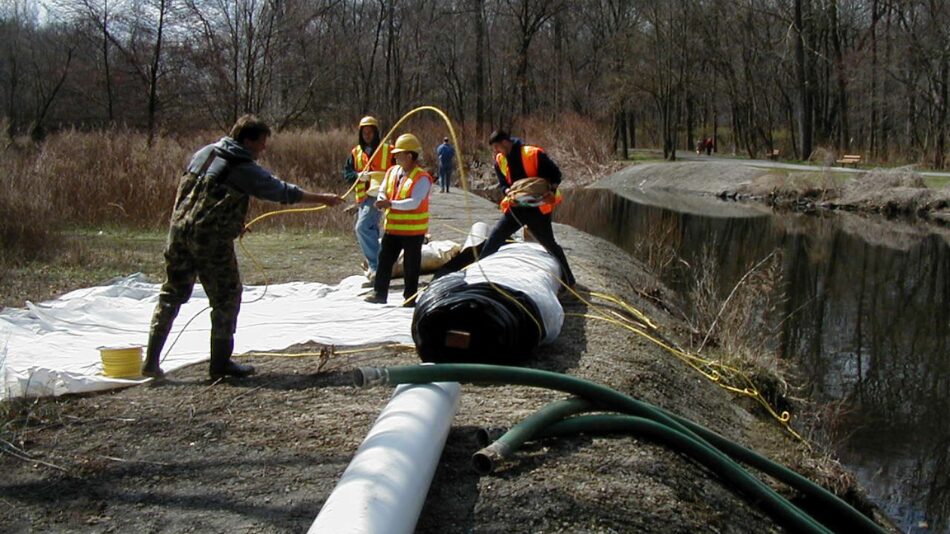
The initial phase of this project involved developing a strategic plan for the successful deployment of the single closed end (SCE) AquaDam. Following this, the next step required workers to carefully lay down ropes at the designated starting bank, which is crucial for flowing water applications. Once these ropes were in place, the AquaDam® was positioned at the starting bank in the correct direction, directly over the laid ropes. The protective wrap that the dam was shipped in was then removed to prepare the unit for deployment. Subsequently, workers brought the ropes back over the top of the rolled AquaDam, allowing them to securely hold and tie off the ropes to nearby trees. It is important to note that AquaDams are typically delivered in a rolled-up form, similar to a carpet roll on a wooden beam. They are packaged in a protective covering and come equipped with lifting ropes or straps for convenient transportation.
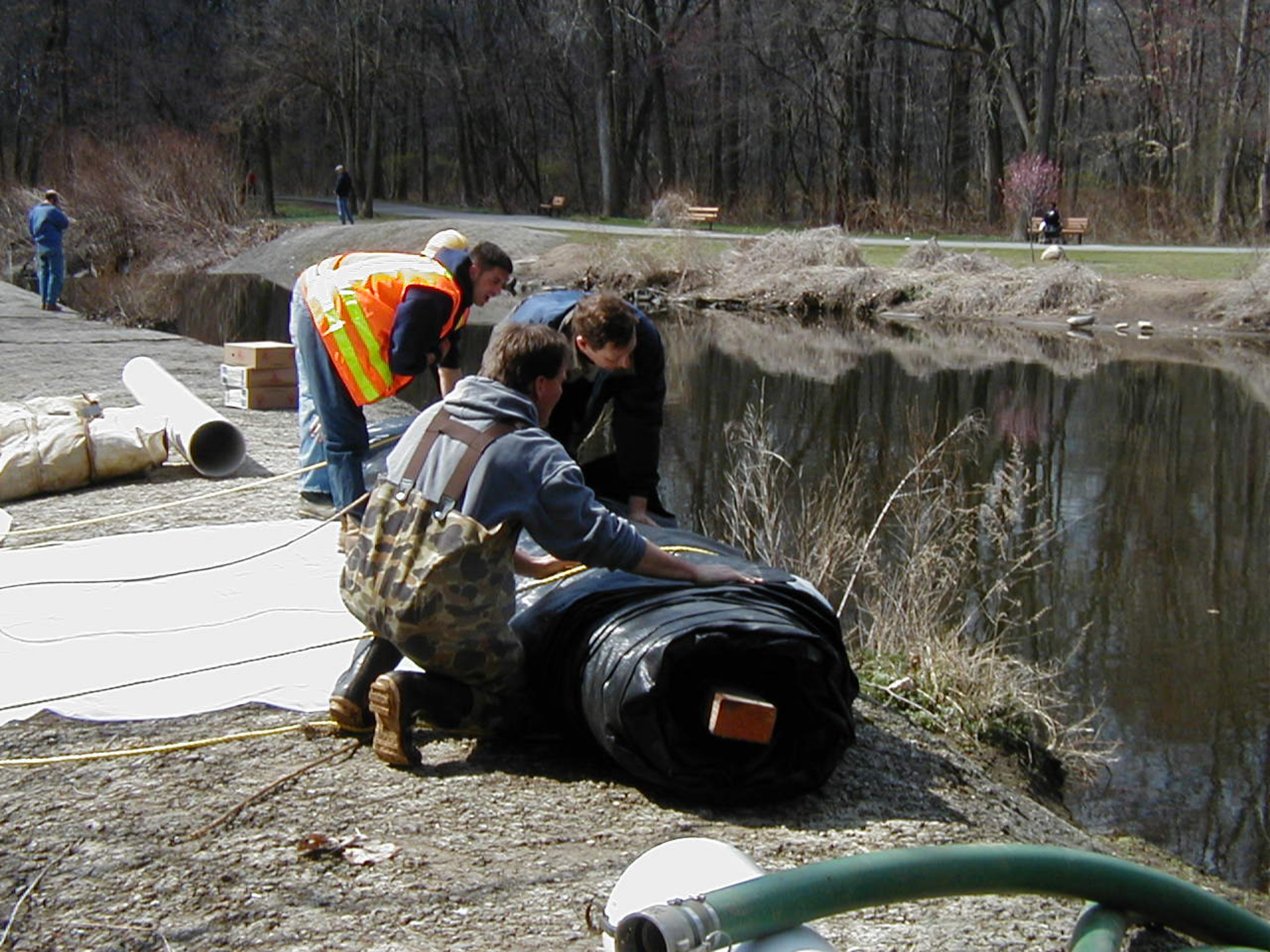
To ensure proper installation and functionality of a SCE AquaDam, it is essential to have a starting bank that maintains a higher elevation than the body of the AquaDam. The open end and fill-tubes of the SCE AquaDam® must remain elevated above the full height of the dam along its designated path. It is important to note that an AquaDam® will only reach its maximum height at the lowest elevation point along its designated path. Workers are preparing for the installation of a 6ft tall 13ft wide 100ft long SCE AquaDam® with a connection collar. This AquaDam® is ready to rolled off its starting bank and into the water.
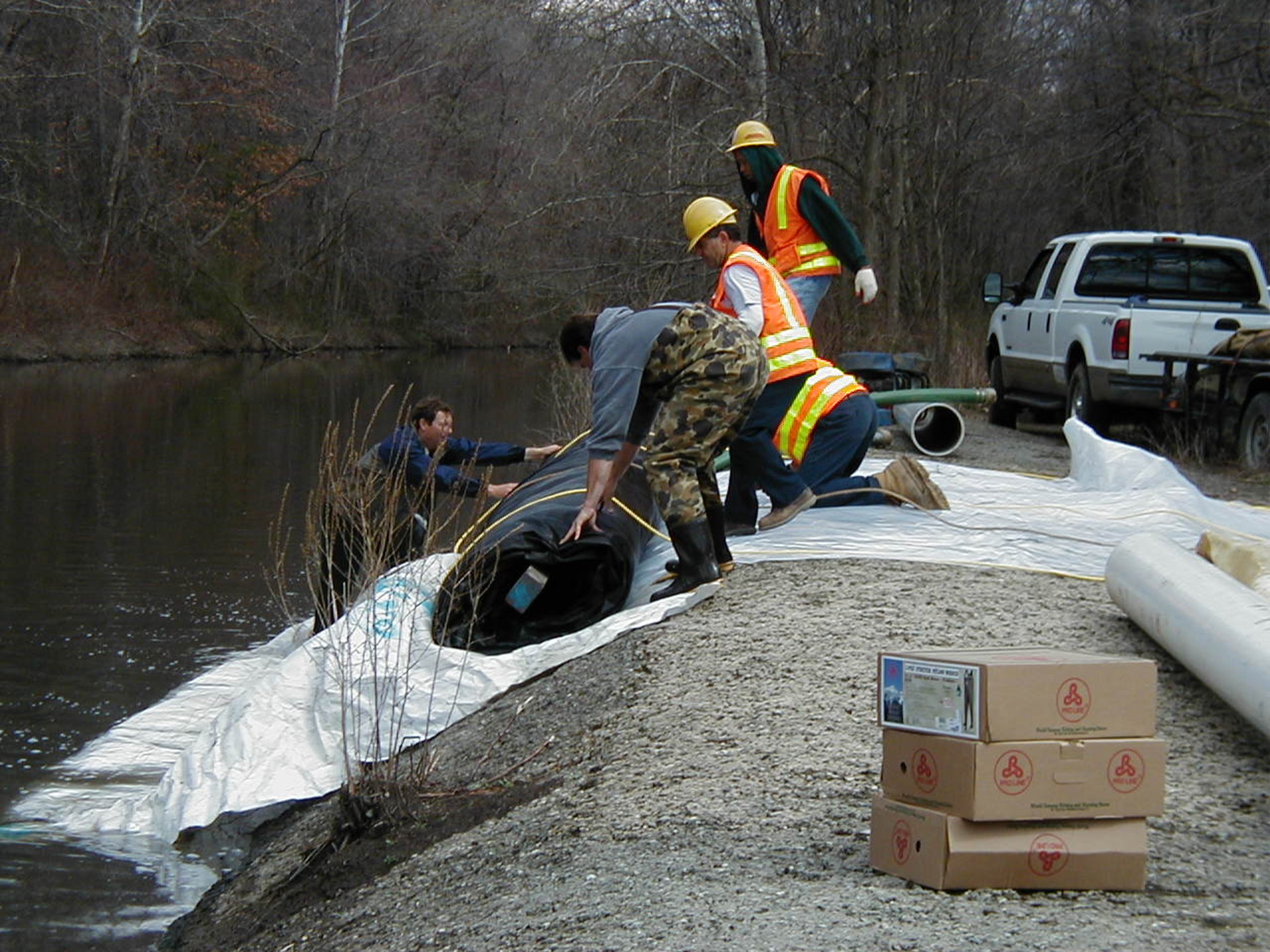
The transparent fill-tubes of this AquaDam® are barely visible beneath the workers' feet. The white material placed along the base of the starting bank was the protective wrap, utilized to shield the AquaDam® from the harsh concrete surface. It is imperative that the pumps utilized on a job site are in proper working order and that an ample supply of them is readily available to ensure the successful completion of the project.
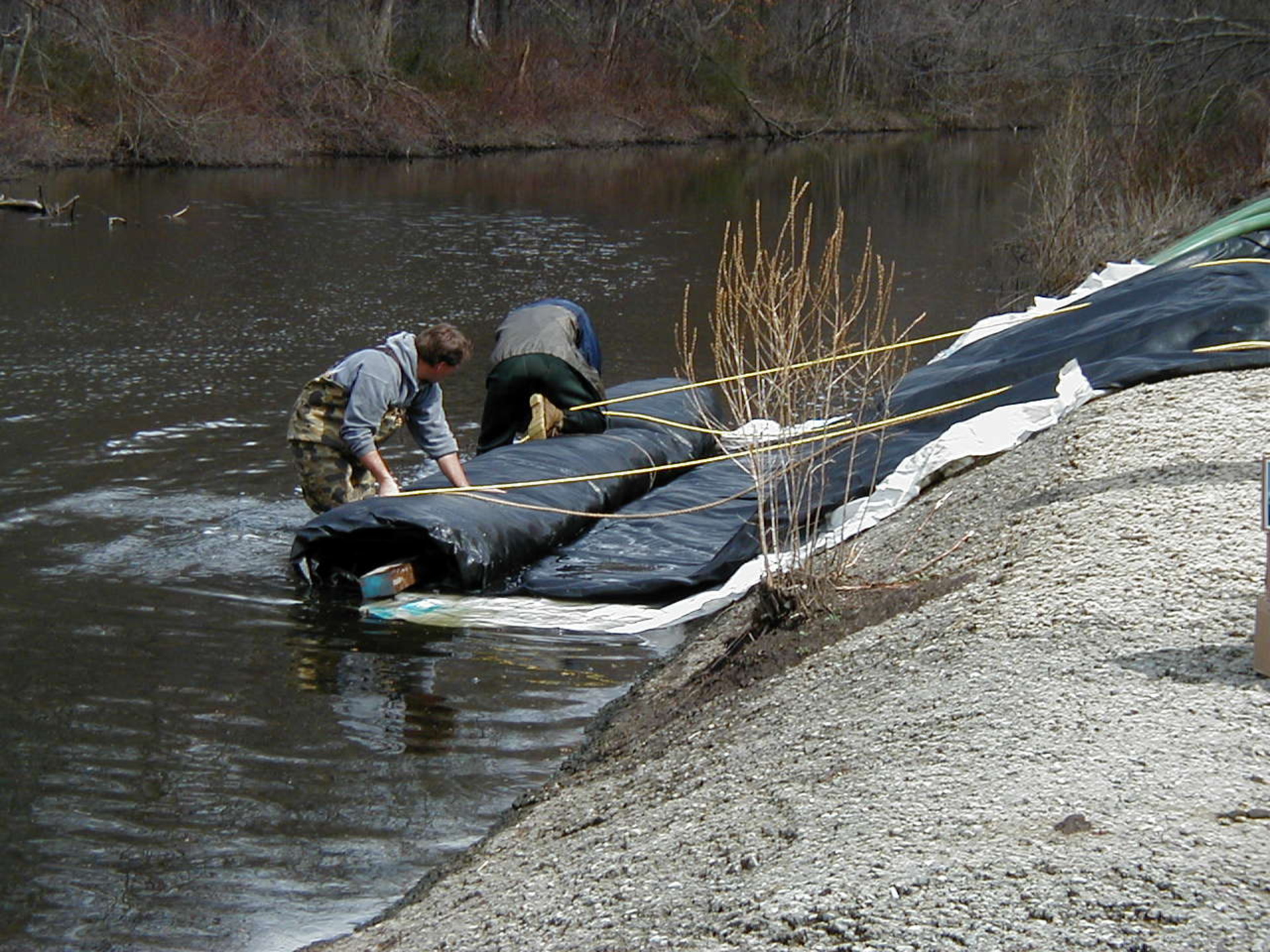
The 6ft tall SCE AquaDam® has been launched off its starting bank and is ready to be filled with the stream water. Ropes have been anchored at shore, run under the AquaDam, over top of the roll, and back to workers who control the roll while the dam is being filled with water. The ropes are used to hold back the roll, while the unrolled length fills and gains head above the surrounding water.
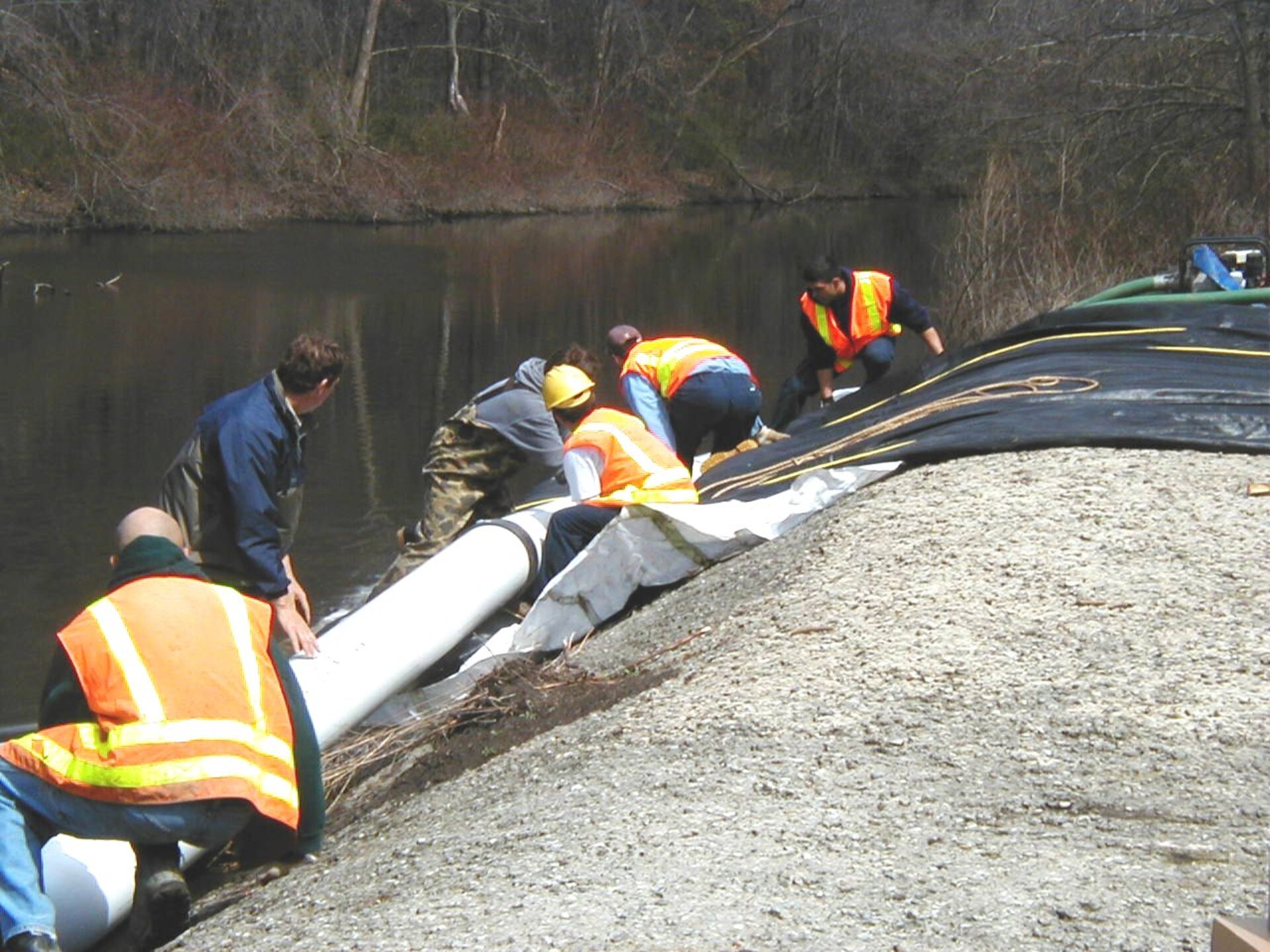
The permits for this job required that a flume pipe be laid underneath the AquaDam® to allow for the passage of fish. A 12-inch PVC pipe was deemed large enough to be used here.
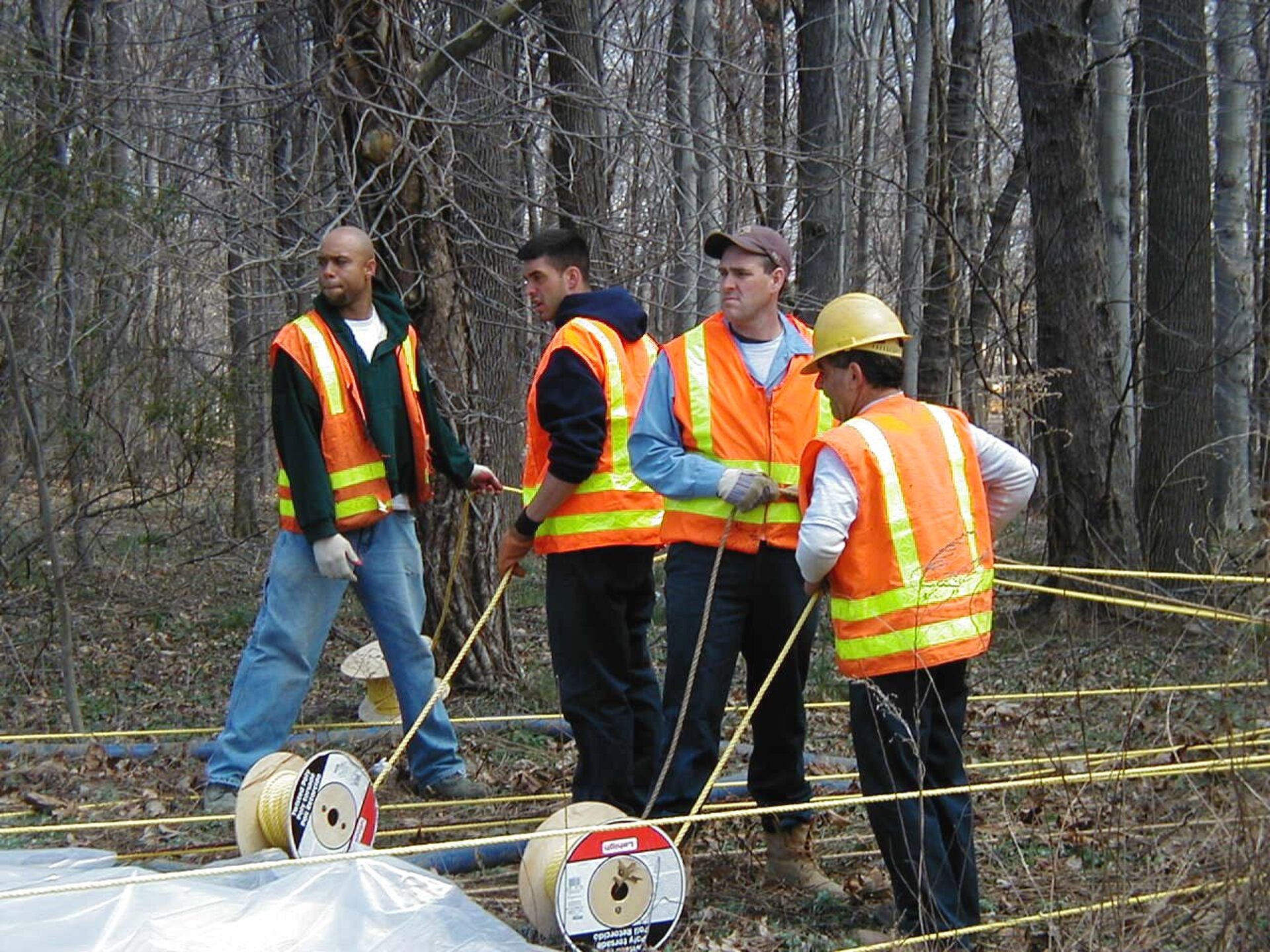
The 6ft tall SCE AquaDam® is carefully unrolled to allow for the development of head pressure inside the inner tubing. Maintaining a sufficient head in the AquaDam® above the surrounding water is crucial when installing AquaDams in moving water, as it ensures the necessary mass required to keep the unit in place. Additionally, wrapping rope around a tree can provide greater leverage to prevent the AquaDam® from unrolling prematurely. This technique is essential for ensuring the successful installation and effectiveness of the AquaDam® in challenging water conditions.
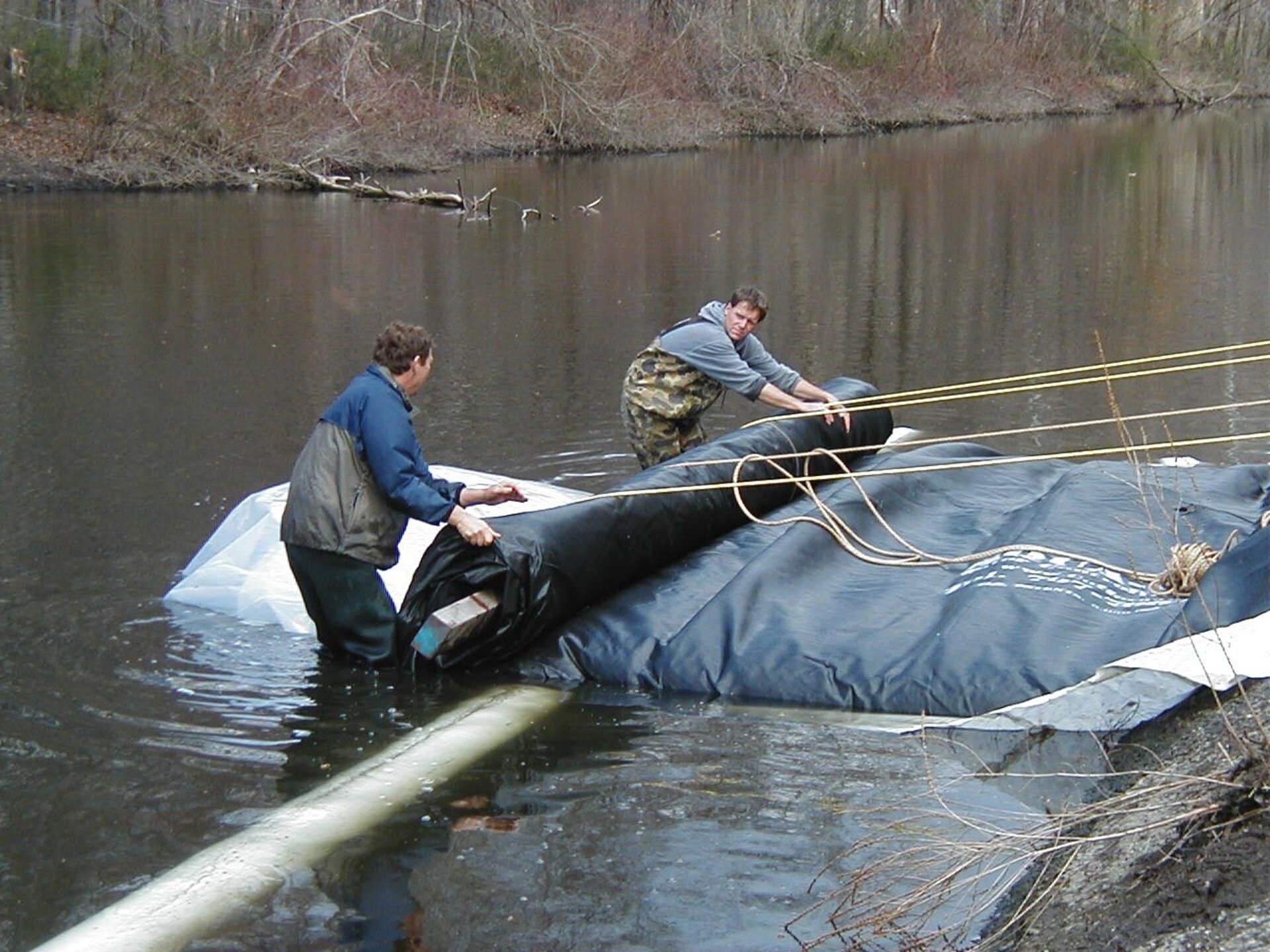
This photo demonstrates how workers maneuvered the AquaDam® over the flume pipe that was required for fish passage. The ropes restrain the roll and keep it from unrolling until a sufficient amount of water has been pumped inside the AquaDam® to supply the needed internal pressure to counteract the forces from the stream flow.
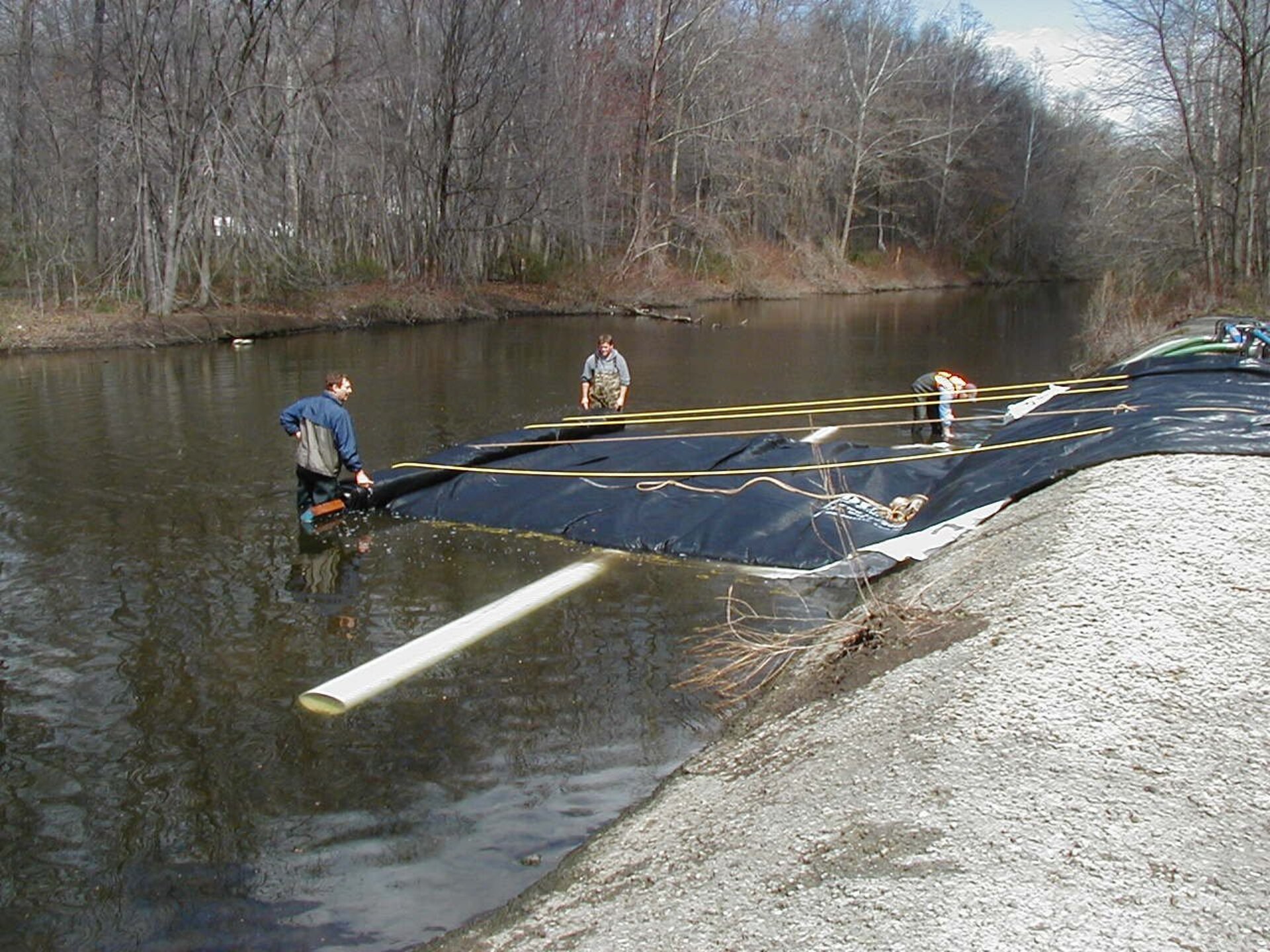
The workers in the water must ensure that the ropes remain centered on the roll and do not shift to the outer edge. Although the pipe may appear longer than necessary, a single 20-foot piece was insufficient for the job. To accommodate the required length, the flume pipe was equipped with a connection in the middle for extension.
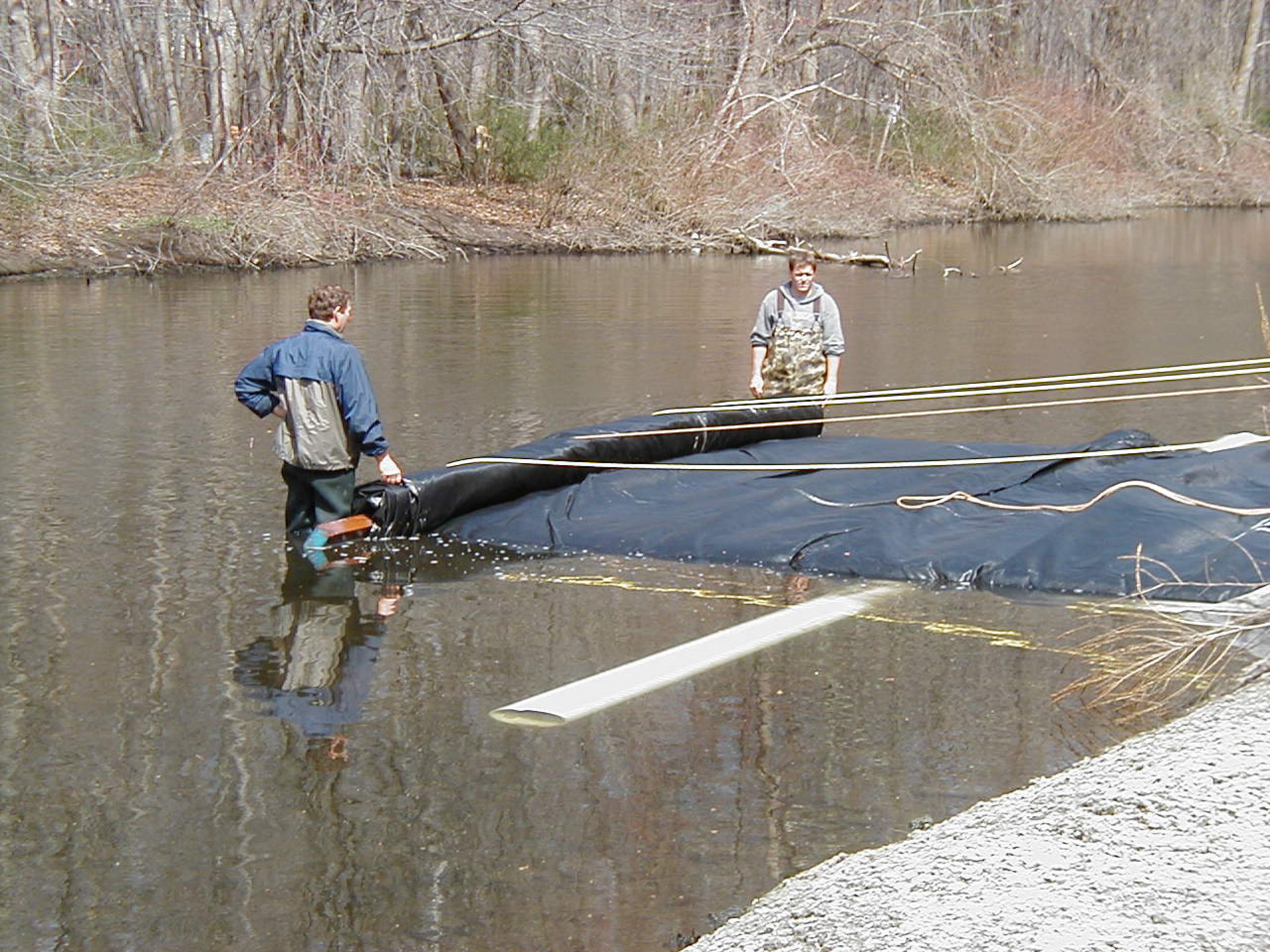
Although the stream may appear to be moving slowly, it is crucial to always ensure that the head inside the AquaDam® remains higher than the surrounding water level. This rule is essential for the proper functioning and effectiveness of the AquaDam.

When working with water, it is crucial to utilize the buddy system, exercise caution, and avoid rushing. Once head has been established, inside the AquaDam, a length of rope is release in approximately 2ft intervals. This will allow the AquaDam® to unroll gradually, advancing one foot at a time. This process is to assure the unrolled body of the AquaDam® maintains head as it closes off the channel of flowing water.
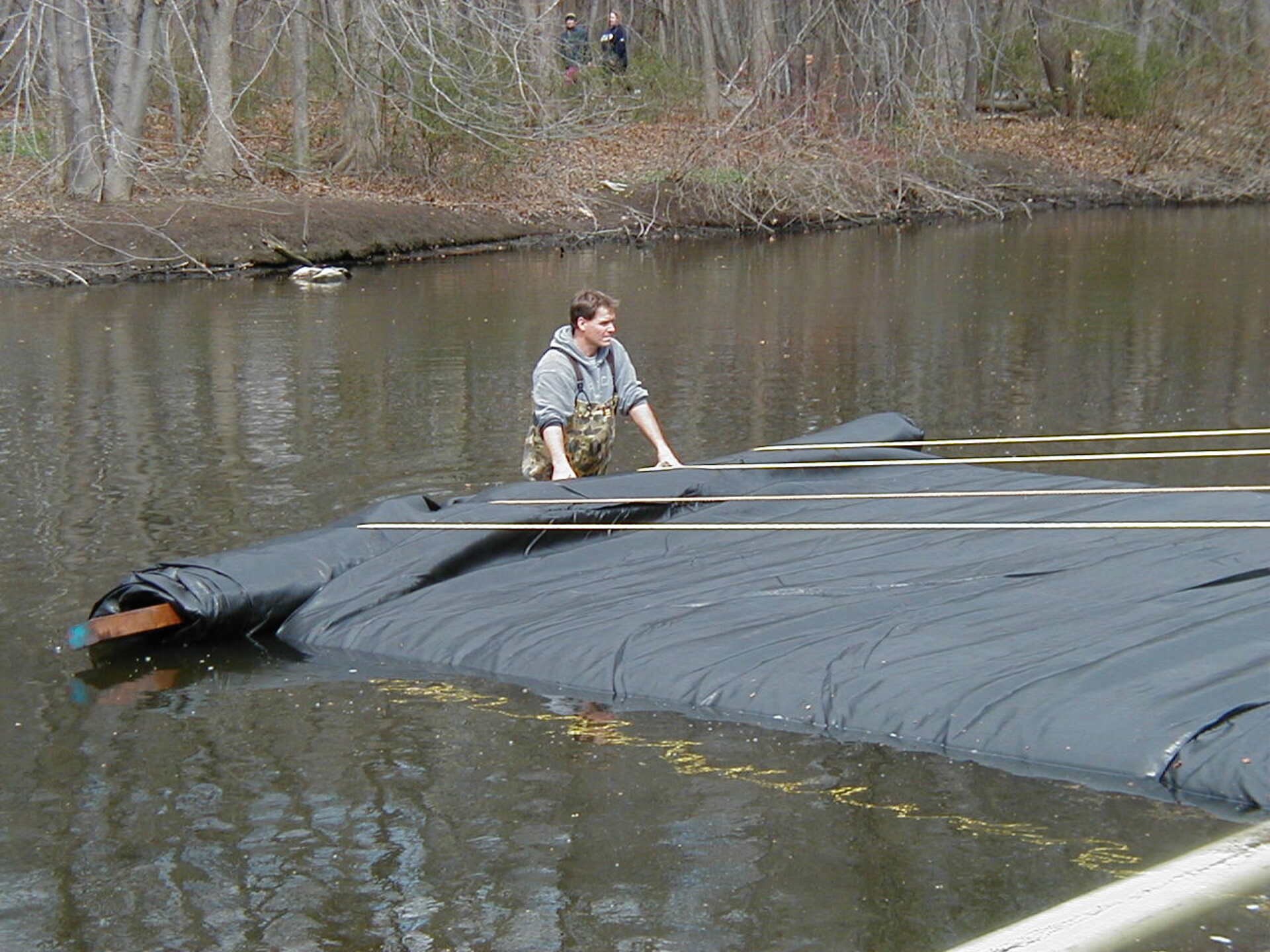
Workers here in this photo have the head pressure built up inside the AquaDam® approximately six inches to one foot. It is now time for workers to release a few feet of the ropes to allow the AquaDam® to unroll another foot or two. It is important to know that the upstream water depth will also be increasing during the installation process.
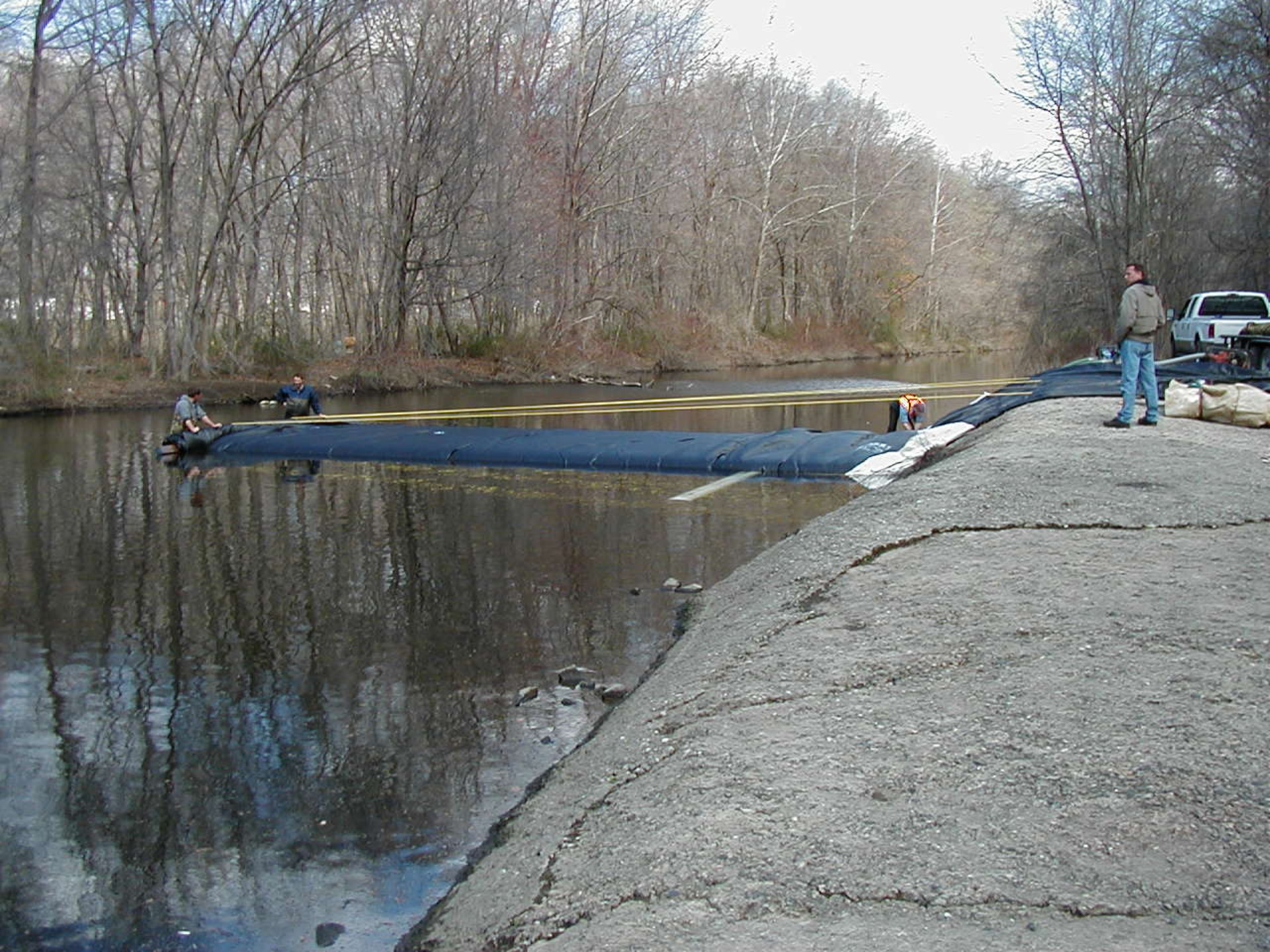
Remember to take it one step at a time. Can you see how high the top of the AquaDam® is compared to the surrounding water? This extra height, known as the head, is crucial for the successful installation of an AquaDam® in flowing water.
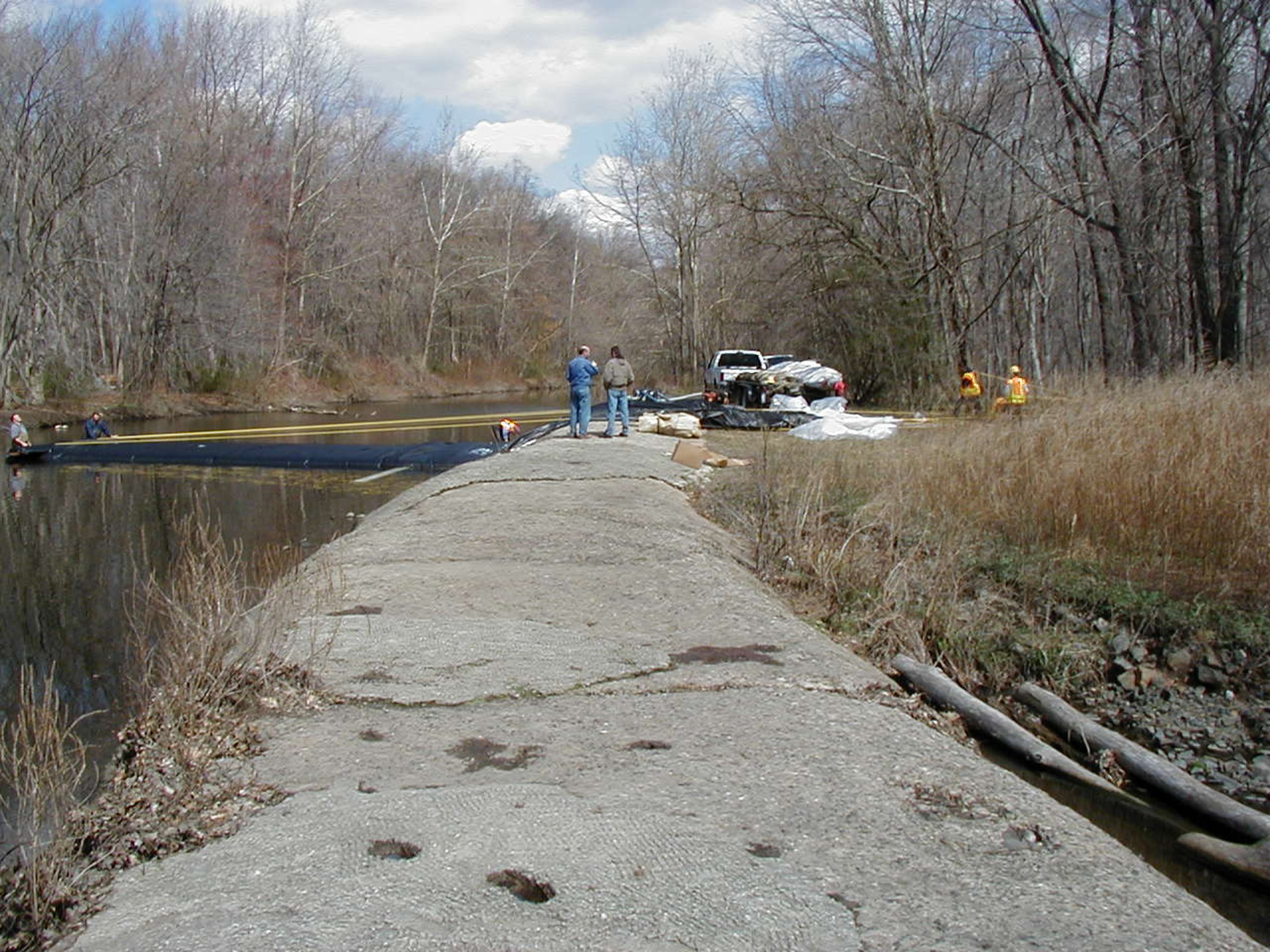
In order to properly secure the AquaDam® during installation, it is imperative that there is sufficient rope to reach the nearby trees, boulders, or other immovable objects. To increase leverage for the workers, each rope was wrapped around the base of a tree at this job site. The fill-tubes for this SCE AquaDam® are positioned directly in front of the workers, who can be identified by their yellow attire. To prevent any unnecessary excess length at the ending bank, additional length was pulled up the starting bank. It is more economically advantageous to have extra length of AquaDam® rather than risk not having enough.
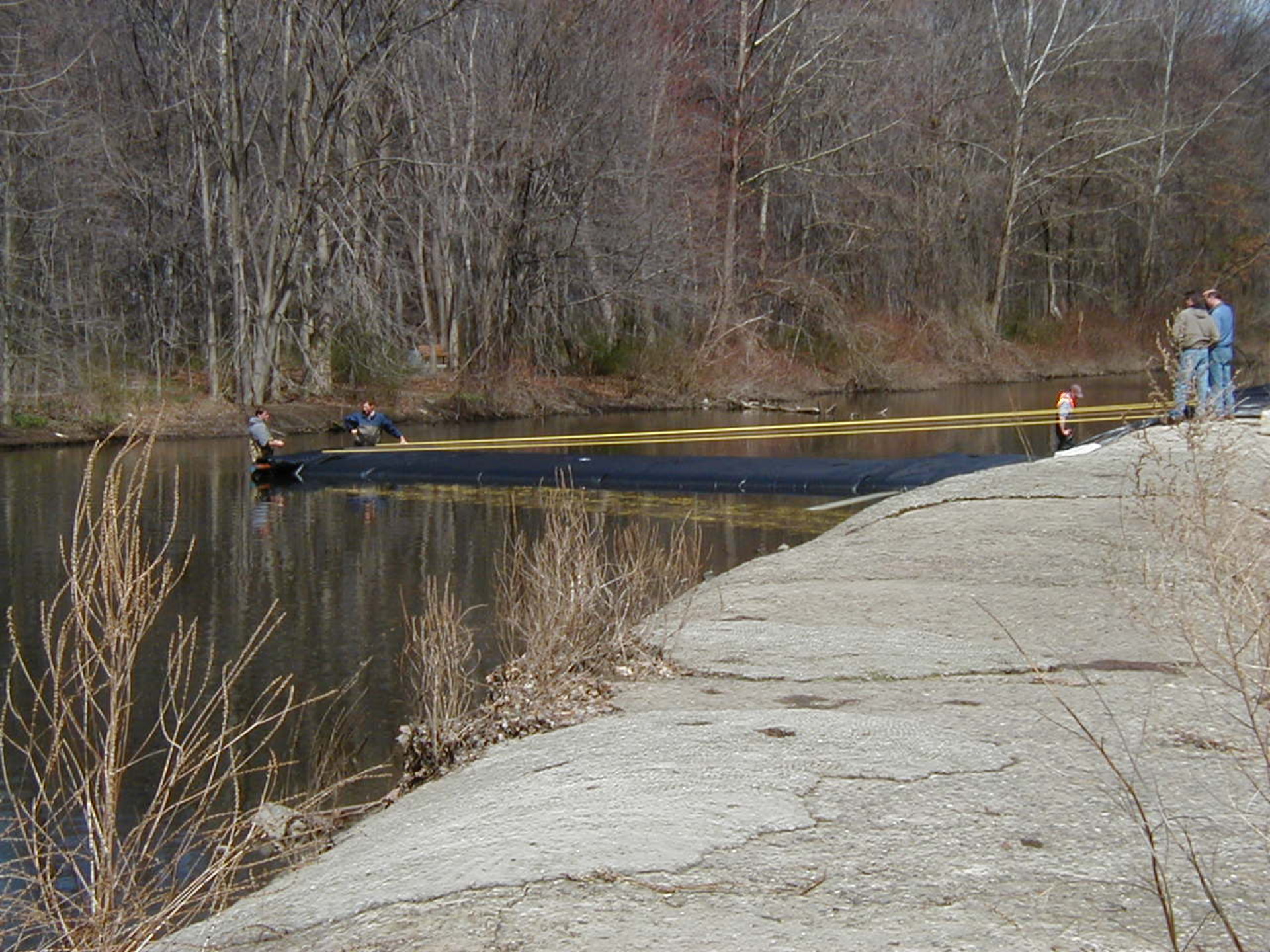
The 6ft tall SCE AquaDam® continues to be filled with stream water. Once the unrolled length has enough head above the surrounding water, workers release a few feet of rope to unroll a few more feet of length. They then secure the ropes tightly and repeat the process until the dam reaches its ending bank.

The 100ft long AquaDam® has almost reached its ending bank. As the dam blocks the flowing water, the depth of the upstream water will rise, and the flow passing through the narrowing channel will also increase. It is crucial to maintain sufficient head during this process.
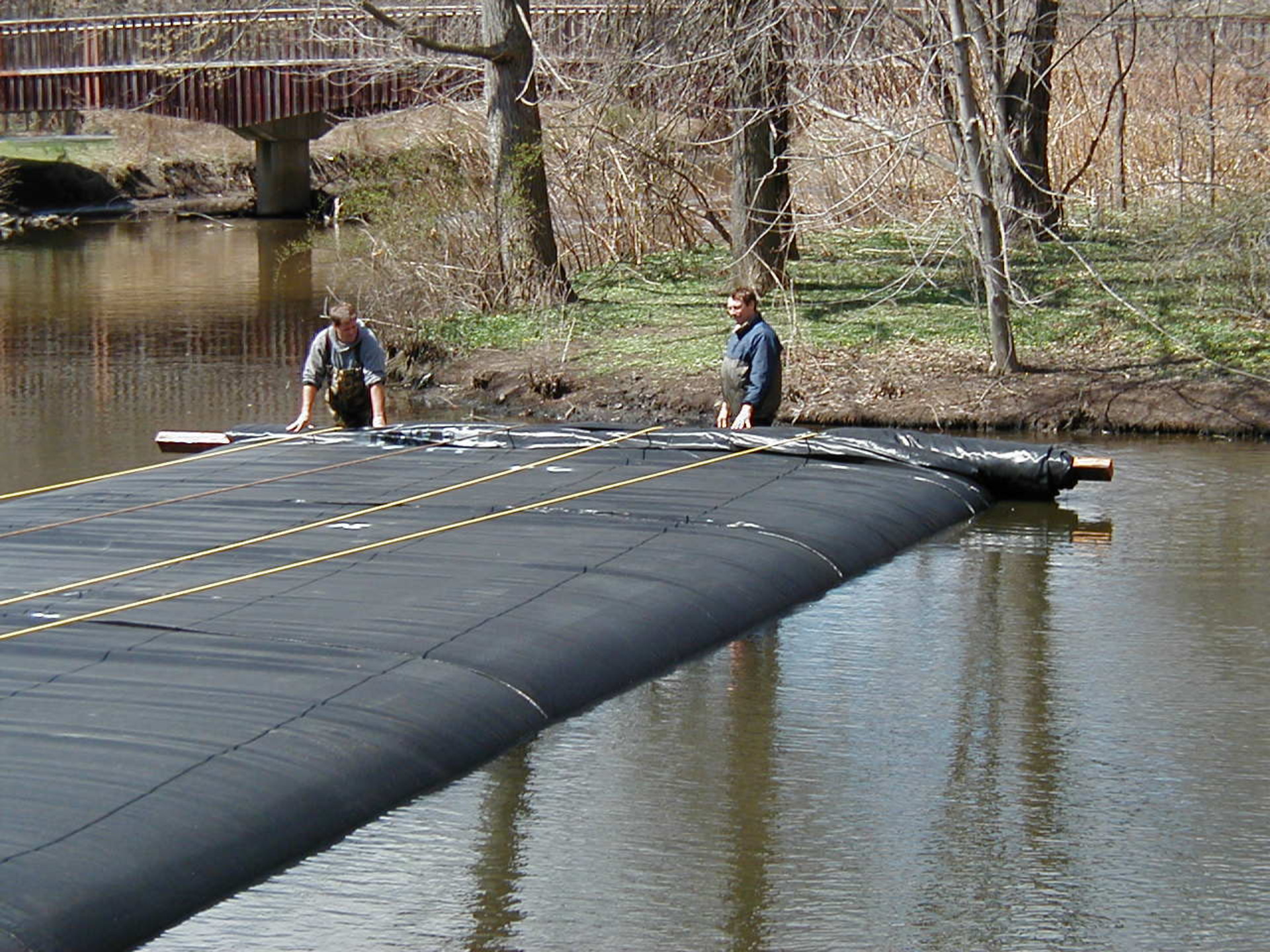
In this photo, the AquaDam® has significantly reduced the width of the stream channel to just a few feet. Can you discern the variations in water depth from upstream to downstream?
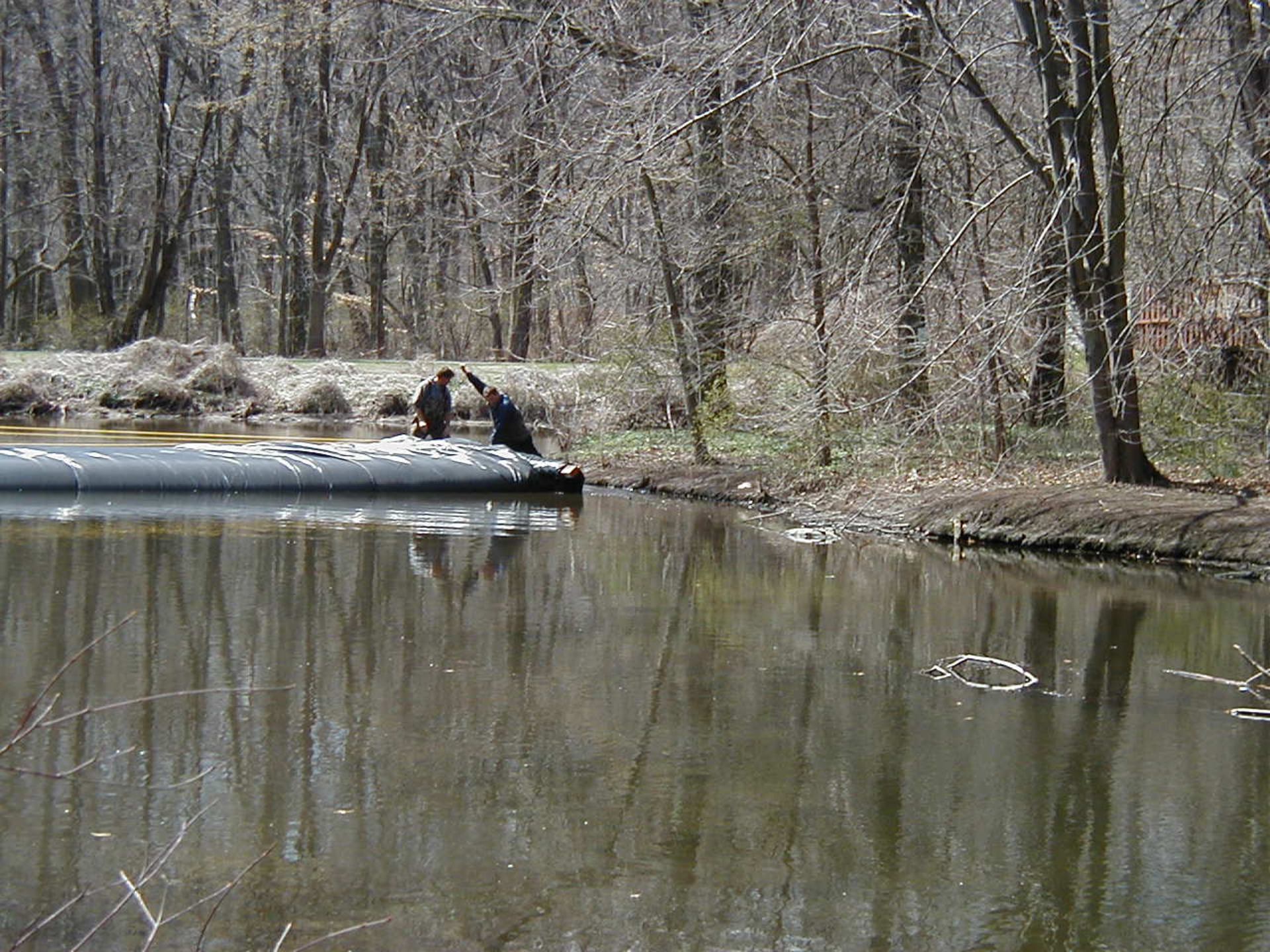
As the channel is dammed off, workers must take caution to ensure that the AquaDam® has sufficient head to counteract the increasing forces of the upstream water depth.
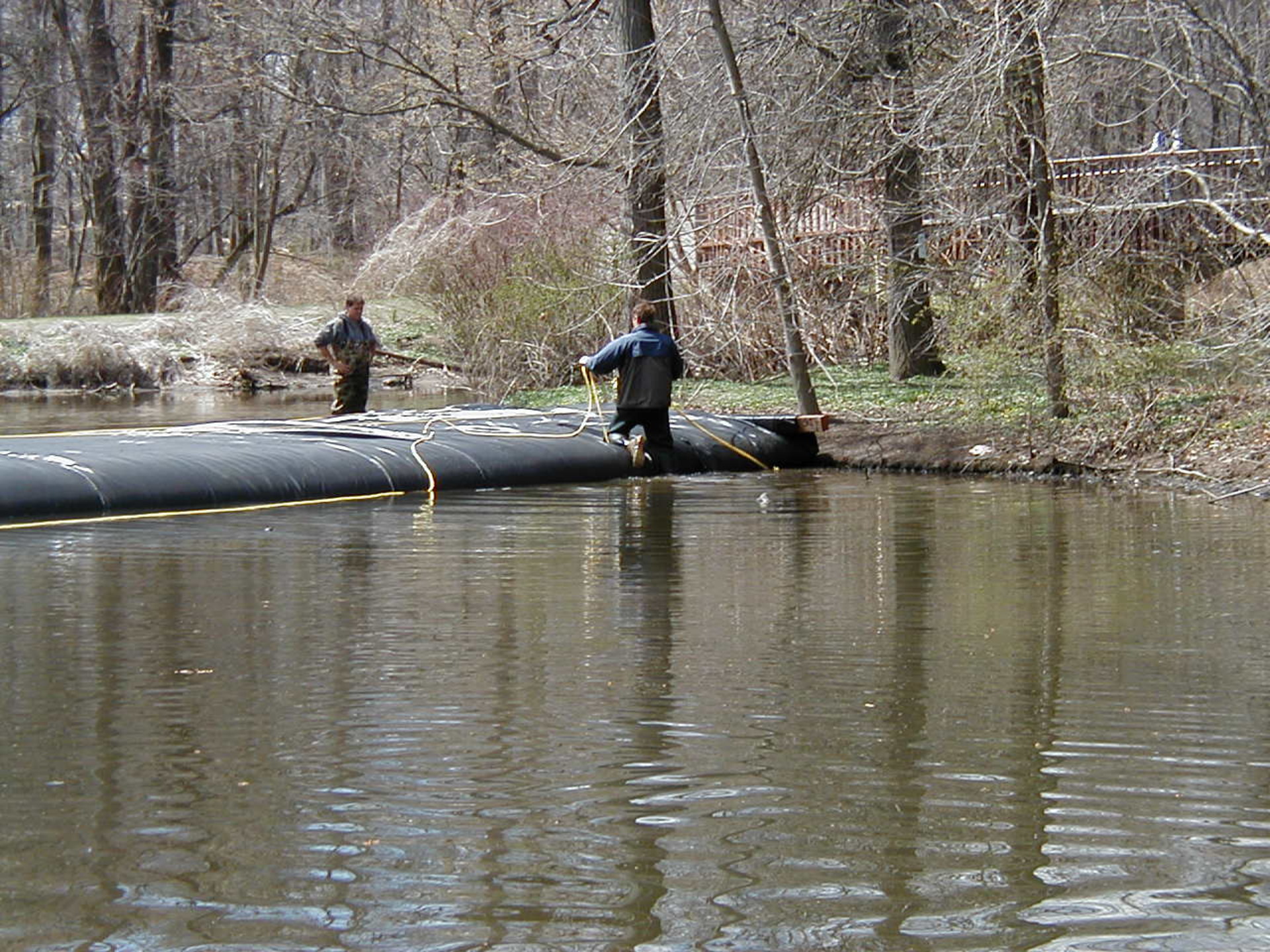
The 100ft long SCE AquaDam® has made it to its ending bank. Workers are securing the roll end and beam to nearby trees using ropes to ensure the dam remains stable as it continues to fill.
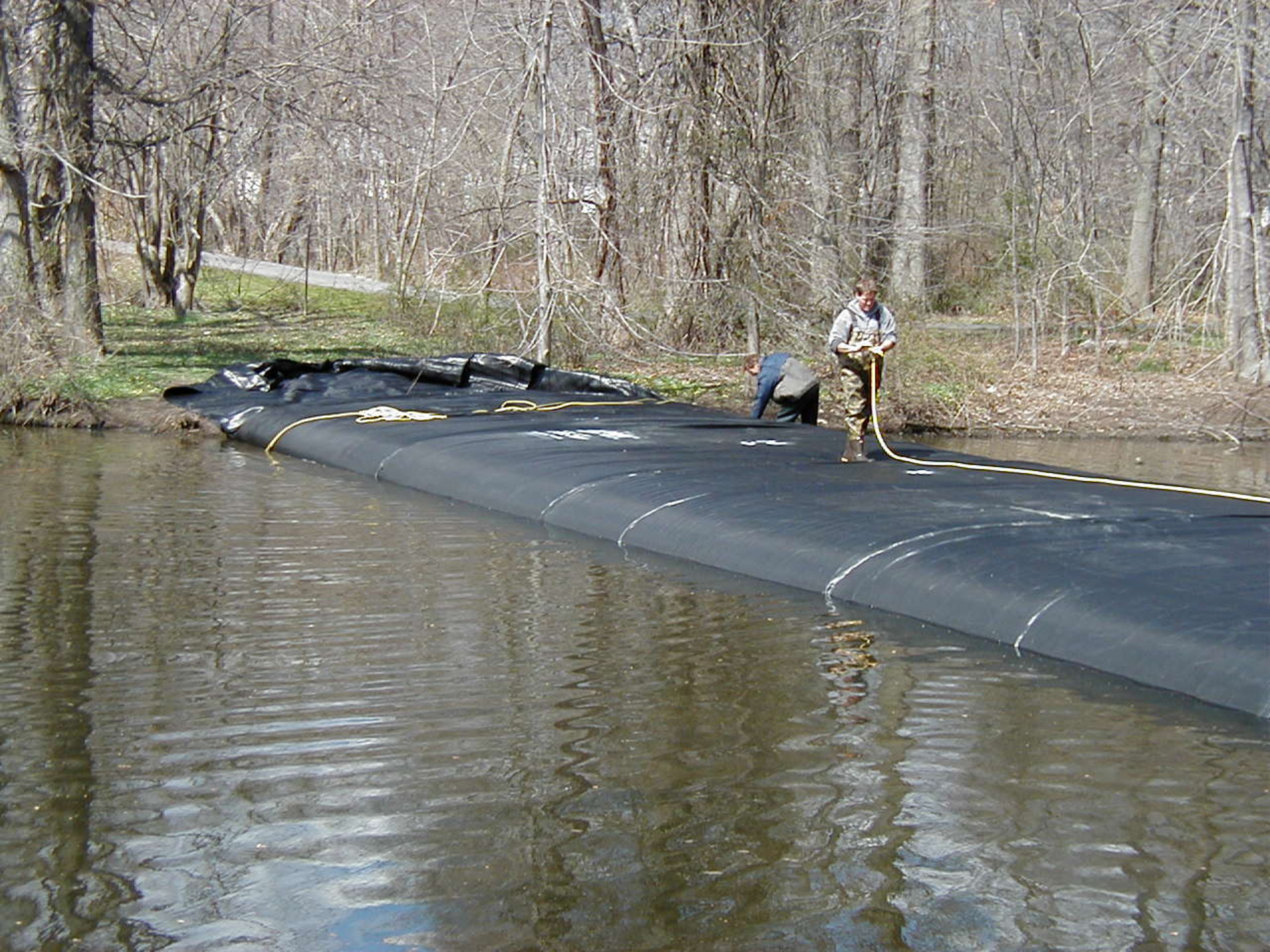
Now that the AquaDam® has sufficient head workers can walk, stand, and work on top of the unrolled length.
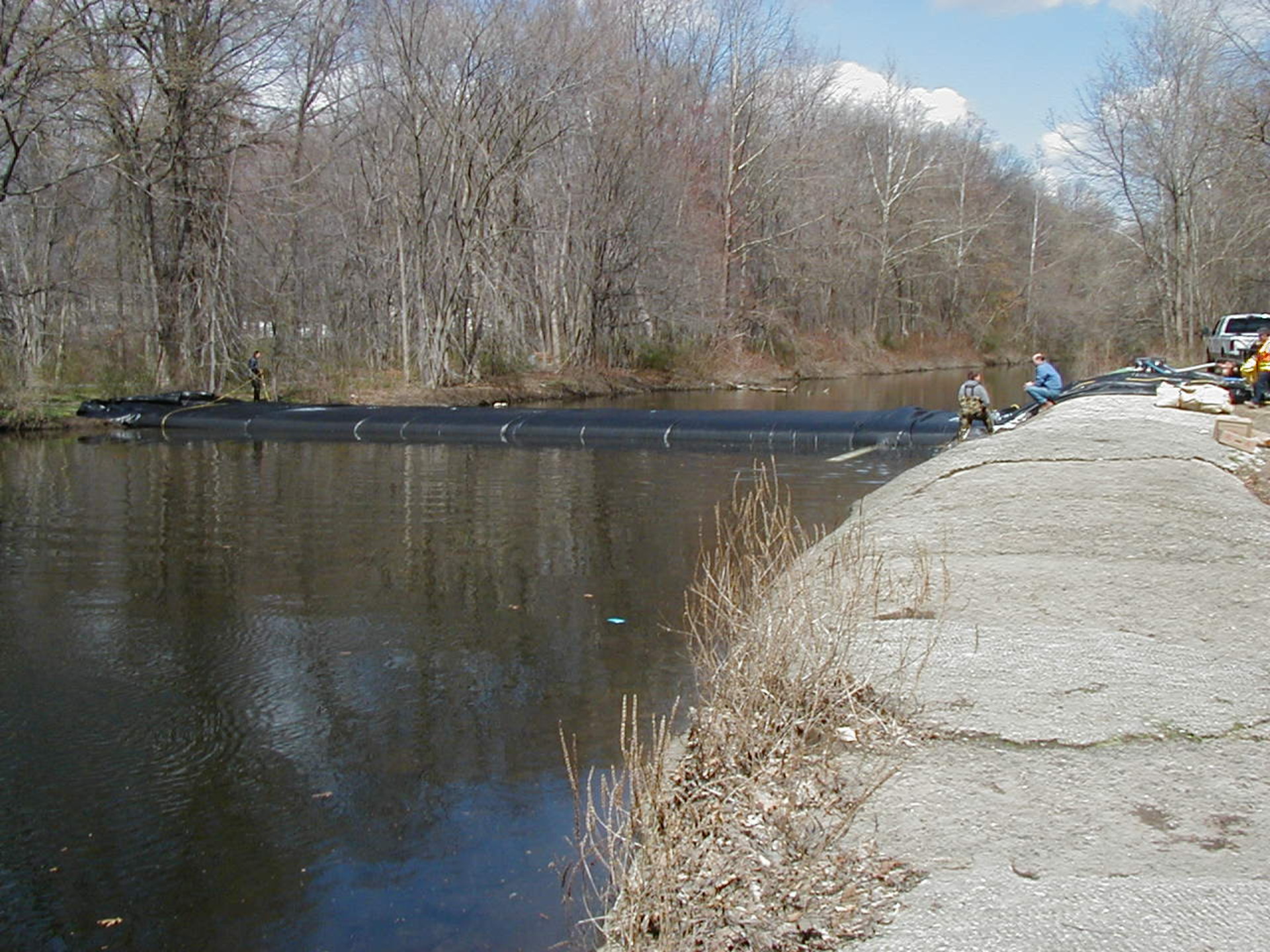
The 6ft tall SCE AquaDam® continues to fill with the stream water.
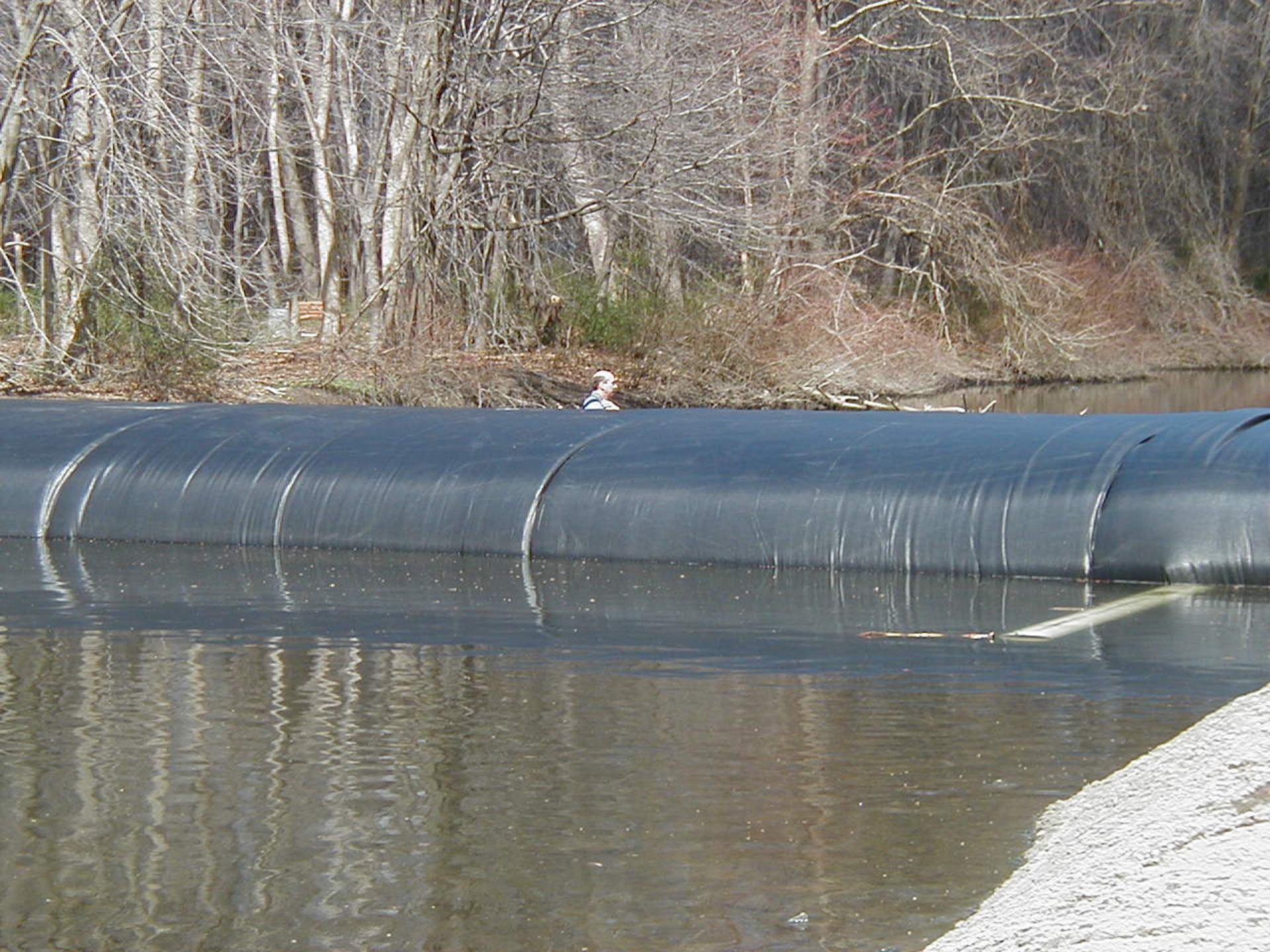
The 6ft tall AquaDam® is almost full now. The worker standing in the background is over 6ft tall.
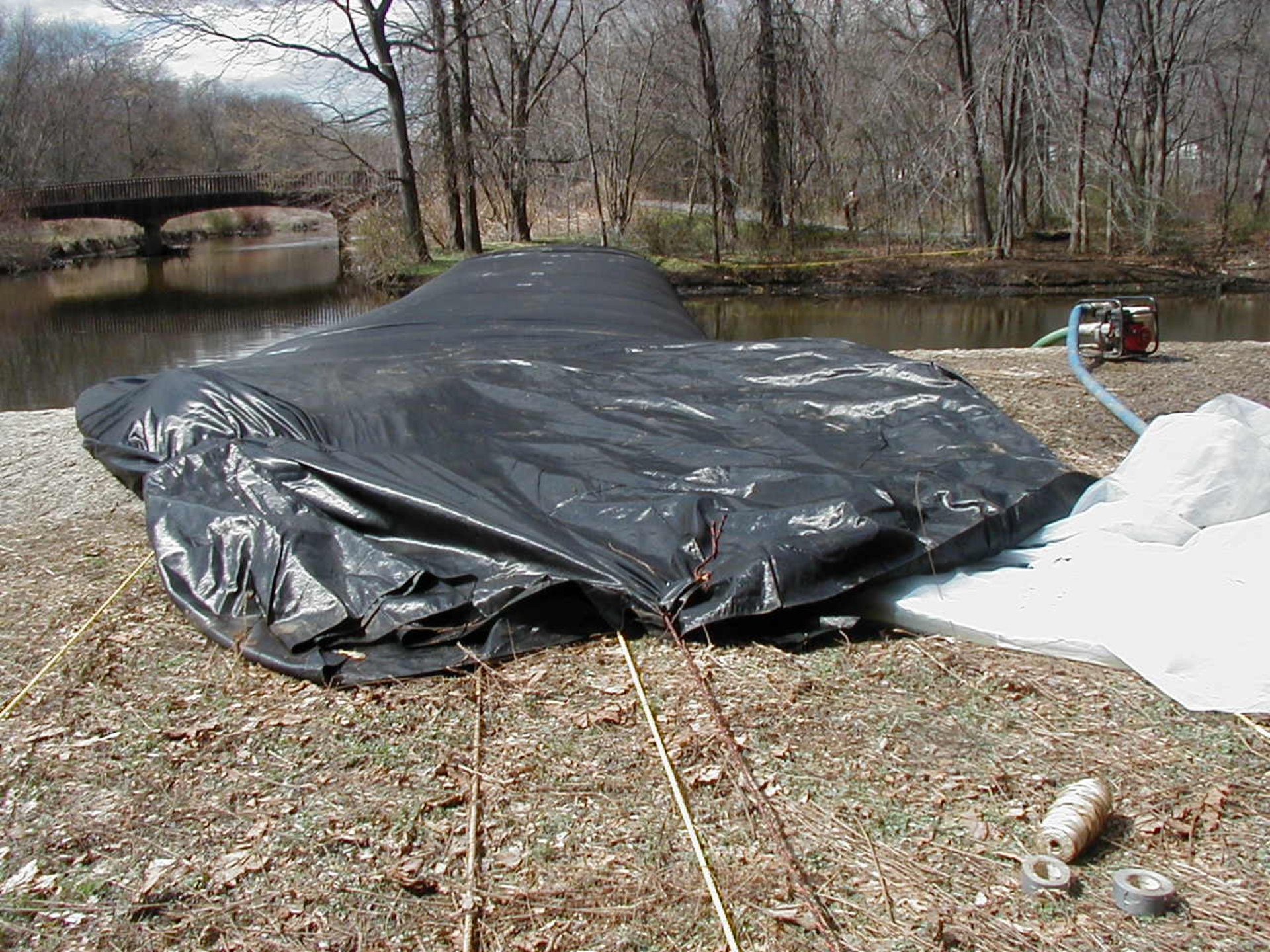
The open end of the 6ft tall SCE AquaDam® can be seen here in this photo. Workers tied the open end back to trees to keep it from sliding down the starting bank, as the AquaDam® was filled with water.
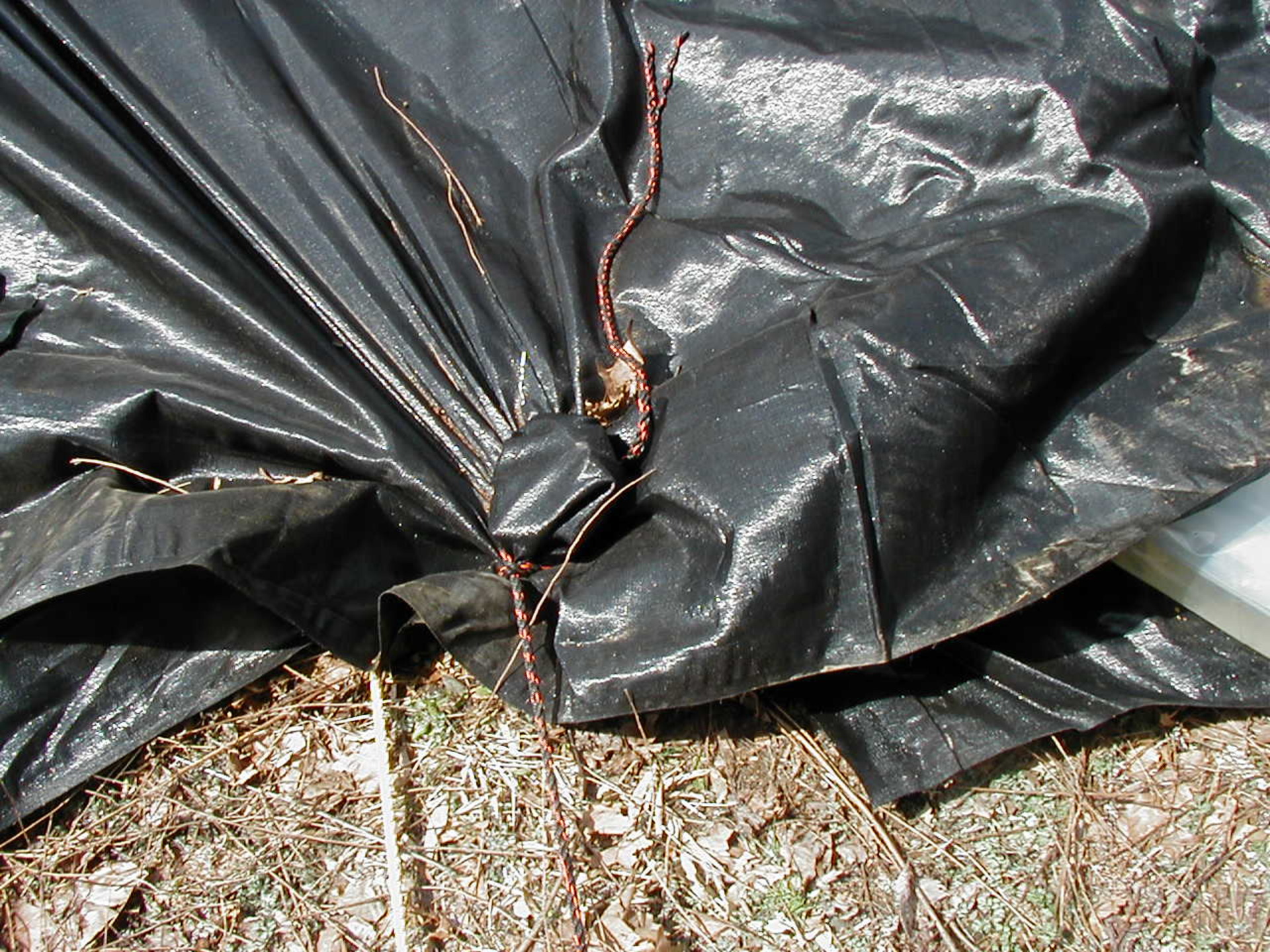
A rock can be wrapped with the outer sleeve material (at the open end) of an AquaDam® and used to help secure a connection with a rope.
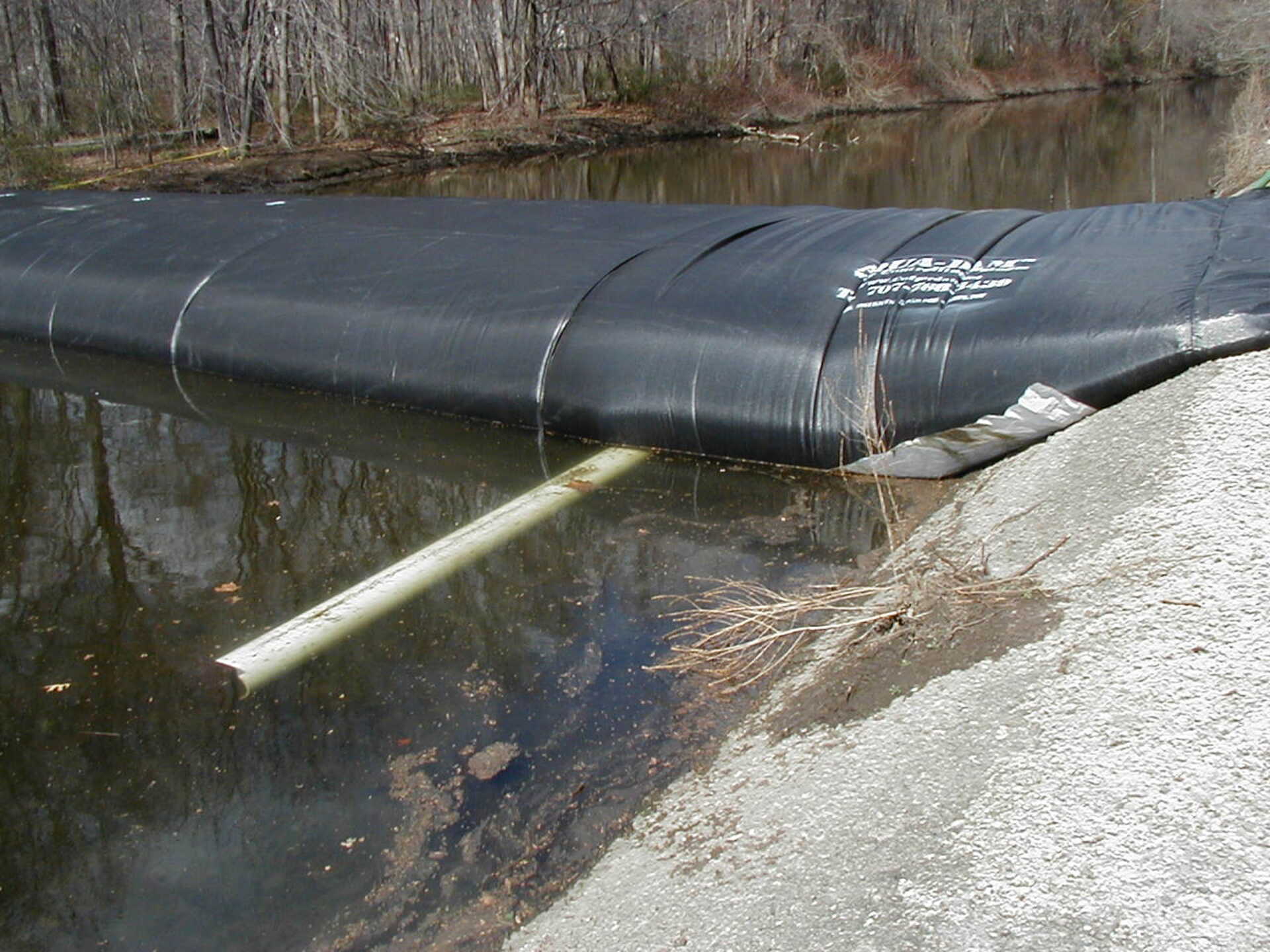
The 12-inch pipe is in and allowing water to pass through. Smaller fish should be able to cross through, if needed.
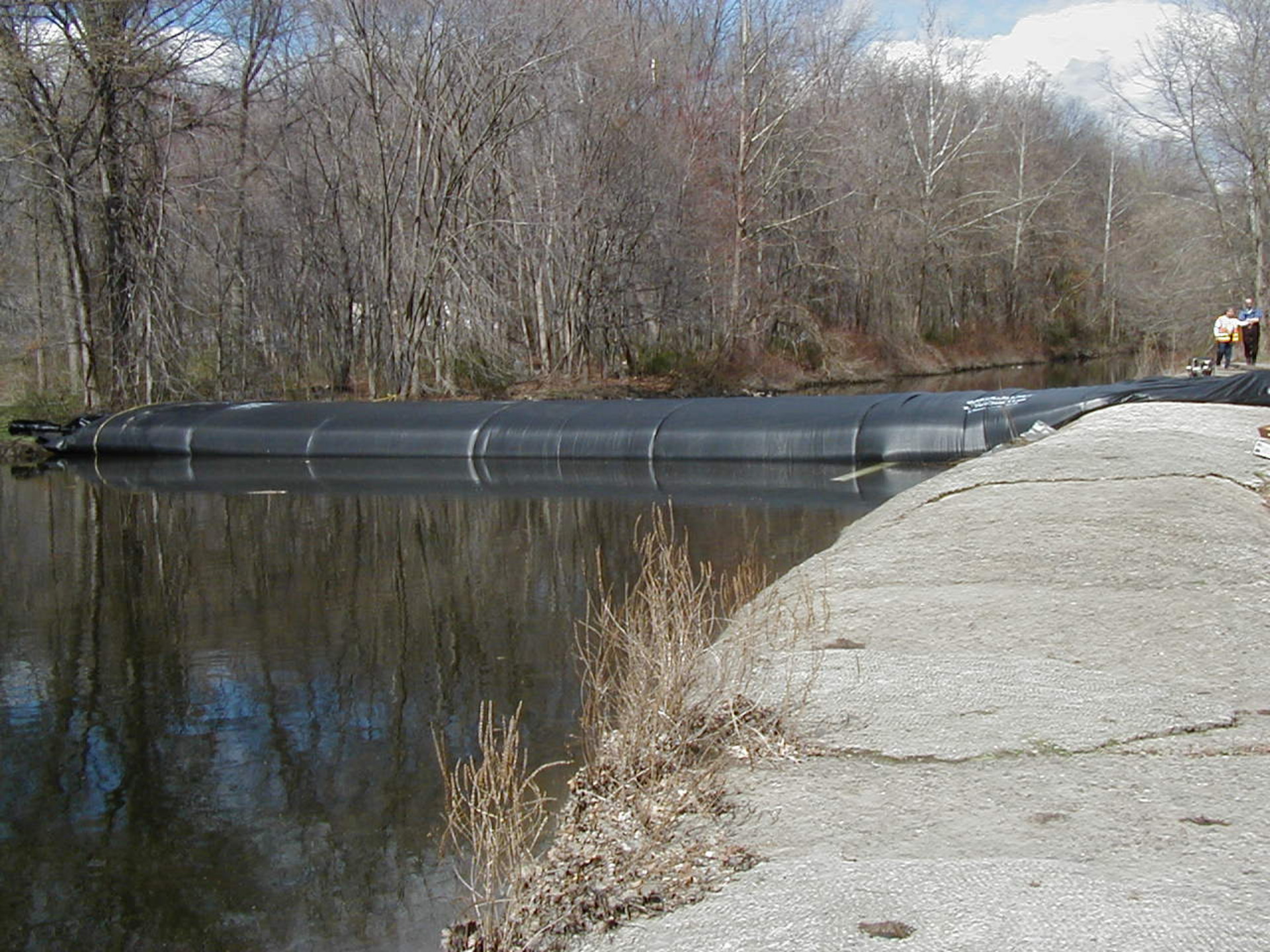
The 6ft tall SCE AquaDam® has been installed in a line configuration, from bank to bank.
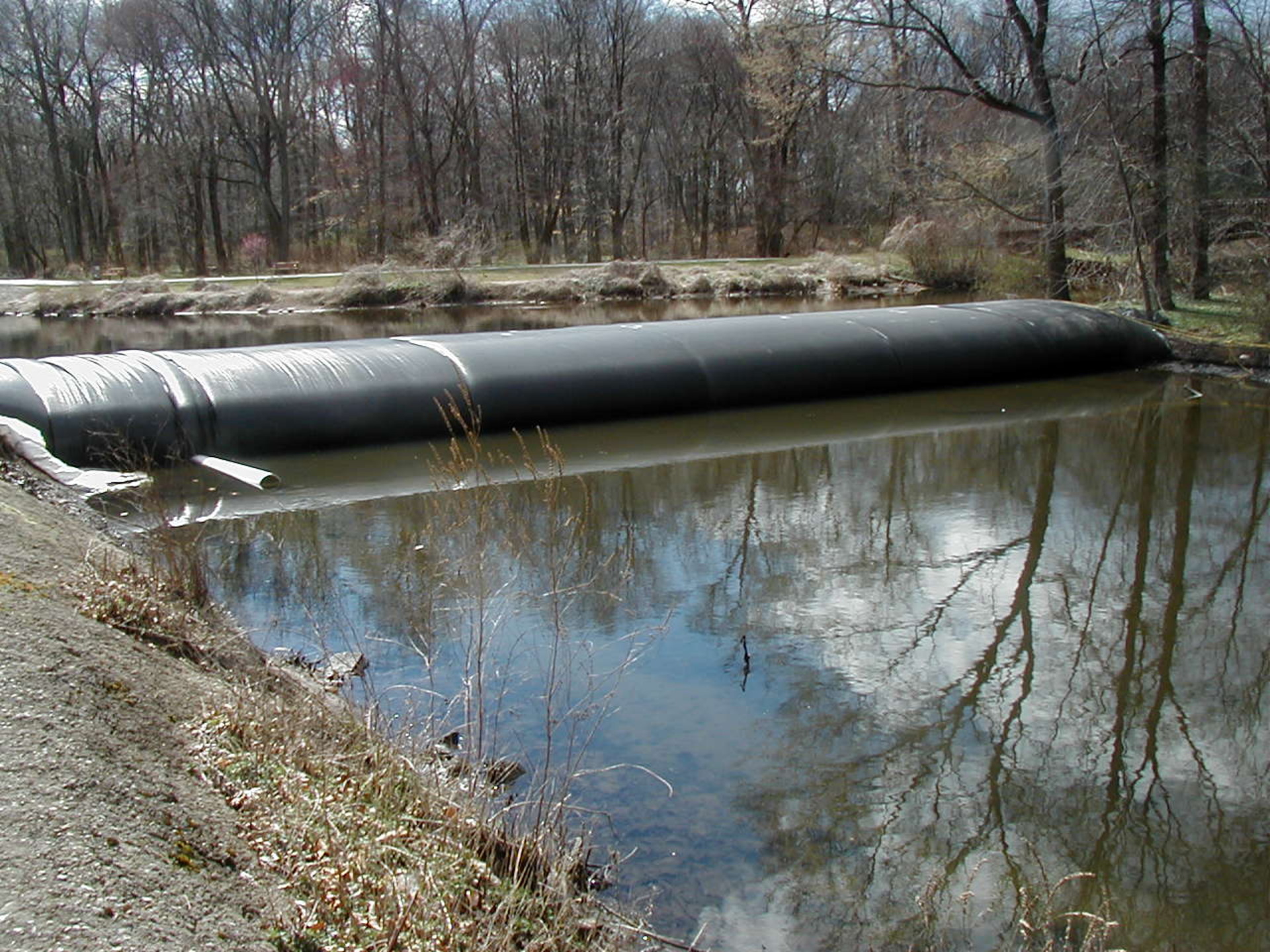
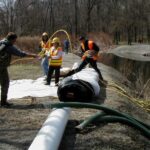
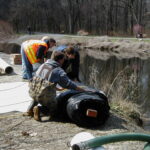
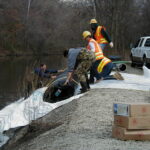
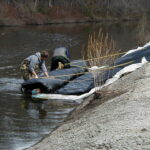
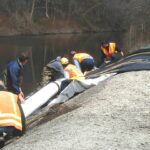


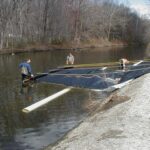
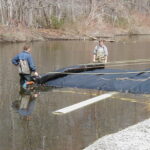
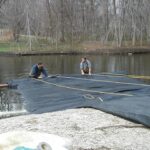
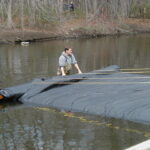

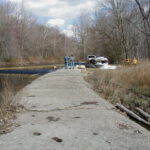

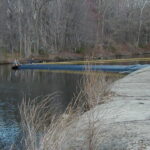
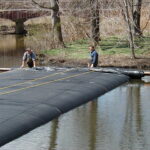
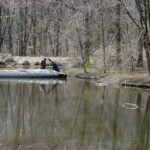
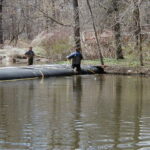
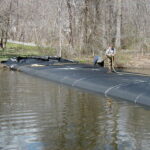

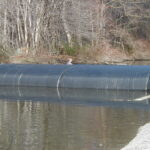
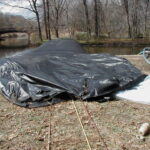
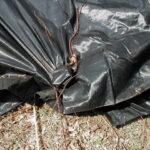
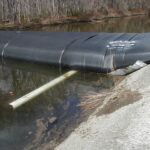
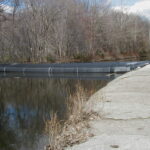
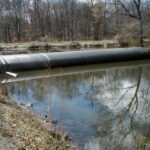
6ft Tall 13ft Wide (full) 100ft Long Single Closed End (SCE) AquaDam, Fish Passage Flume Pipe, In-stream Water Impoundment, Line Configuration
